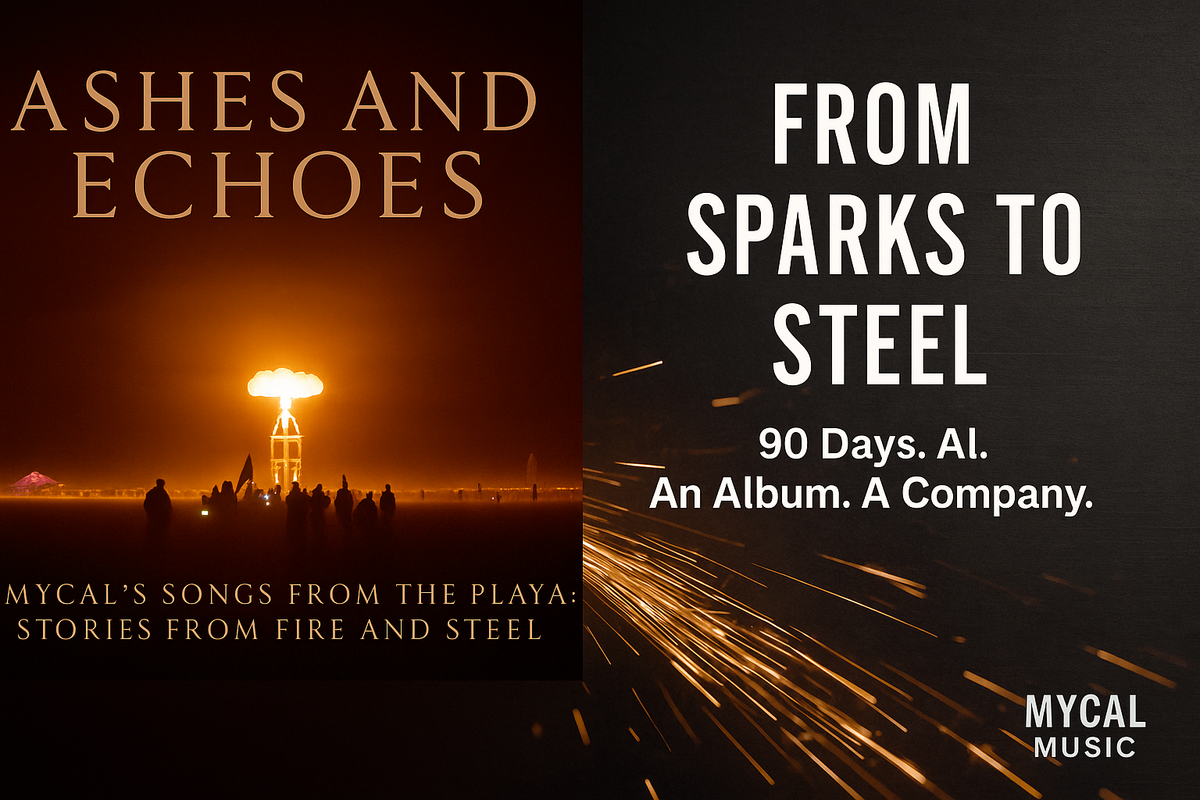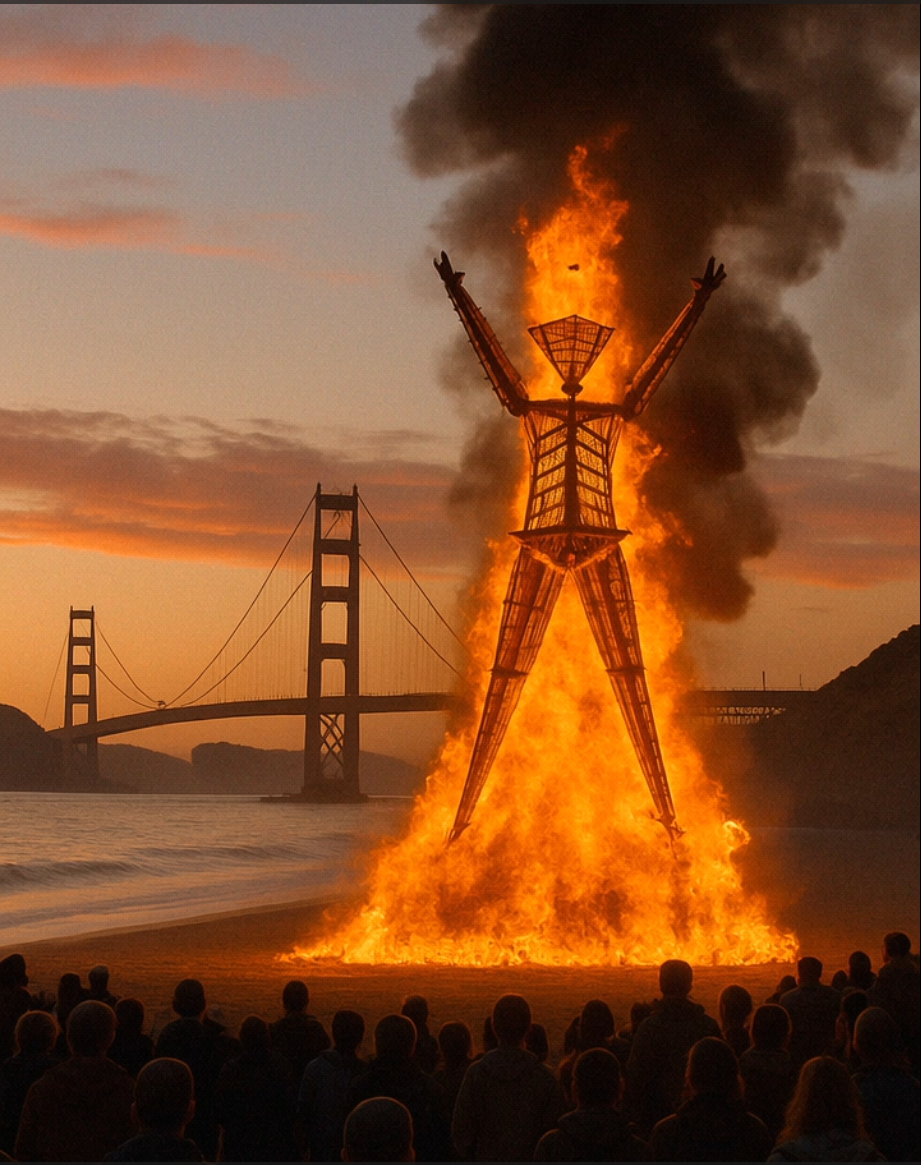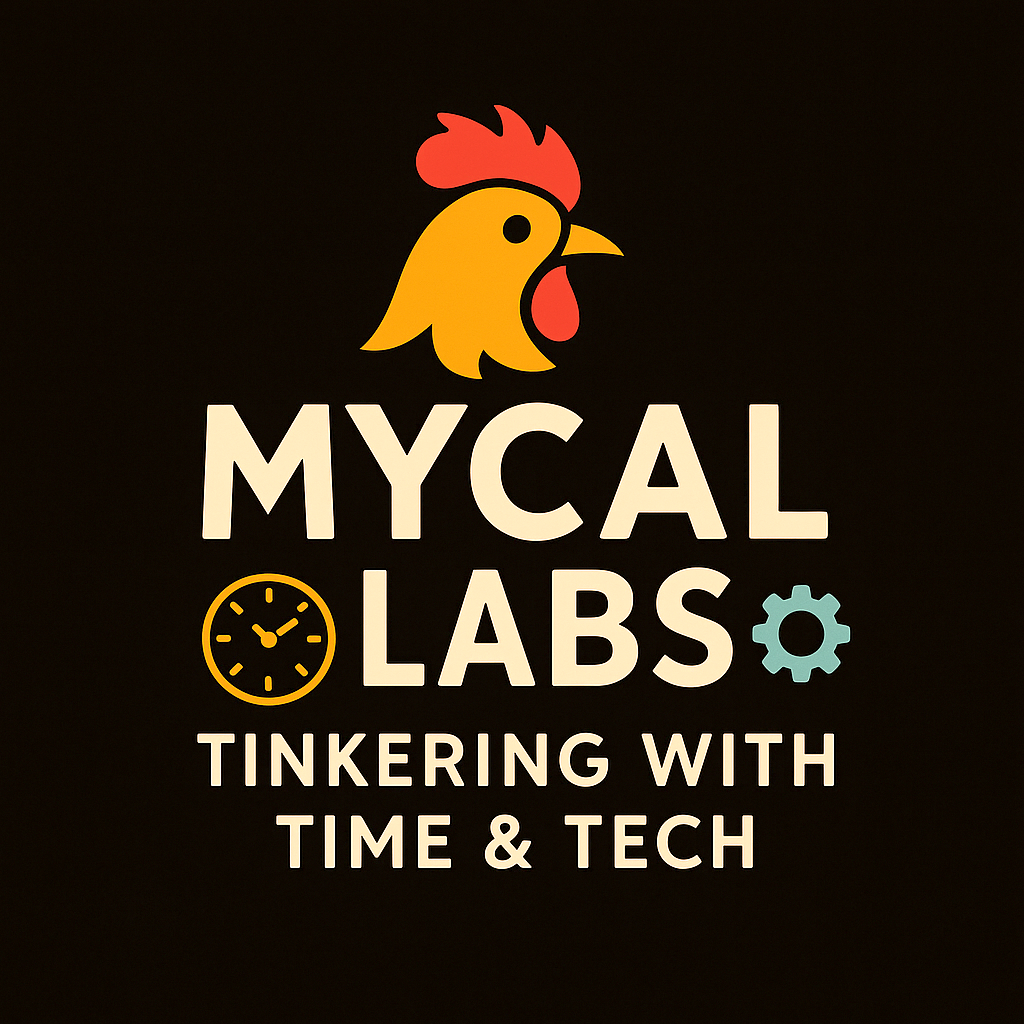From Sparks to Steel: How AI Helped Me Build a Music Company and Release an Album in 90 Days
In just 90 days, I built a music publishing company, wrote and recorded an album, and released it worldwide — with AI as my co-pilot. Sparks to Steel is the journey of turning raw ideas into lasting creation in the age of AI.

Tinkering with Time, Tech, and Culture #7

I didn’t plan to start a music publishing company this year.
I didn’t plan to release an album either.
But here we are.
Two days ago, I was tweaking Spotify metadata at midnight, my cursor hovering over the “finalize” button. Today, Ashes and Echoes – Songs from the Playa is out in the world under my own label: Mycal Music — with me as the primary artist, lyricist, and creative force.
In just 90 days — in moments of spare time and a few weekends — I built a music publishing company, wrote and recorded an album, and released it worldwide.
And I didn’t do it alone.
I had a co-pilot — not a person, but an AI.
The Spark in the Dust
The seed for this album was planted in a place without Wi-Fi.
Burning Man has a way of boiling you down to your essential elements. Dust, sweat, exhaustion, awe — and in my case, songs.
Over the years I’d written scraps of lyrics on the backs of maps, sung into recorders at sunrise, hummed riffs while wiring propane lines. Most of it stayed as fragments. Good intentions without a path forward.
Then earlier this year, while experimenting with AI for a totally different project, it clicked:
The same systems I was building for code and automation could also help me bring those dusty lyric fragments to life as full songs.
The 90-Day Build
The traditional music pipeline is a labyrinth: write, arrange, record, mix, master, design, distribute. Each step is its own bottleneck.
I already had the lyrics — every verse, every hook, every story came from me. They were written from lived experience, intimate details, and moments AI could never fabricate.
I built custom GPT backed with local LLM-powered pipelines to:
- Arrange music – Generating initial chord progressions, rhythm sections, and instrumentation ideas to match my words.
- Experiment with styles – Trying different grooves, tempos, and genre blends before committing to studio tracks.
- Create concept art – Generating cover visuals as mood boards before hand-selecting and refining the final look.
- Manage release logistics – Auto-building checklists, tagging files, and formatting metadata for multiple platforms.
I wasn’t clicking “generate” and calling it done — I was iterating, steering, and deciding. Every final track went through my ears, my hands, my judgment and finally Audacity edits and mastering.
Out of curiosity, I ran my lyrics through multiple AI-content detectors. Every single one said human-created. That’s because they were — I wrote them with details you can’t fake without being there.
A Little Help from Weird Steel
About halfway through writing, I decided to throw the door open.
I dropped one of the lyric sheets into a shared Google Doc and sent the link to the Weird Steel crew — the camp family that’s seen the dust, the burns, and the late-night propane refills with me.
Most didn’t have the time or headspace to wade into it.
But one person — just one — clicked in, read the draft, and suggested a single line that shifted the entire feel of a verse. It was small, but it was critical. The kind of edit that’s invisible to anyone else, but essential to me.
It reminded me that while AI can be an incredible collaborator, there’s still magic in a human who knows the same dust you’ve walked through.
The Buck Bandersnatch Song
Not all the stories came from my own memory.
One of the most powerful tracks on the album started with a Facebook thread from an old-school Temple builder — a man I’ve followed for years, who’s poured his sweat into the Playa long before it was fashionable.
His posts weren’t “lyrics.” They were wandering, half-poetic ramblings about firelight, loss, and the strange ache of building something beautiful knowing it will burn.
I asked if I could work with his words, and he said yes.
I shaped them into verses, preserving his voice and cadence, adding just enough structure to carry them as a song.
The result was The Buck Bandersnanch Song — something no AI could ever reproduce, because the raw material came from a lifetime of dust, grief, joy, and craft. It’s not just a song; it’s a captured spirit.
The Birth of Mycal Music
Somewhere in that process, it hit me: this wasn’t just about one album.
If I could build the system once, I could keep using it — for my future releases and maybe even for other artists.
So I built Mycal Music.
I registered the publishing entity, locked down the branding, and wired it directly into the pipelines I’d created. Now I could go from a lyric scrap in my notes app to a distributed song on Spotify, Bandcamp, and Apple Music without handing the keys to a label.
What I Kept for Myself
AI could help me make an album, but it couldn’t feel the burn of a whiteout dust storm.
It couldn’t know why I chose to spell “Playa” as “Ply-uh” in my lyrics.
It couldn’t feel the crackle in a propane flame at 2 a.m.
The heart of this project — the lyrics, the voice, the intent — is mine.
The machines extended my reach, but they didn’t give me my voice.
Release Day
Today, Ashes and Echoes – Songs from the Playa drops on Apple Music, Spotify, Amazon Music, and almost every other global streaming service.
This isn’t just an album — it’s proof of concept.
A fully independent, artist-owned, AI-accelerated pipeline that goes from spark to streaming without a traditional label's gatekeeping.
The songs are live everywhere. The label is real. The systems work.
🎵 Get it here:
Spotify |
Apple Music |
Amazon Music |
YouTube Music |
Tidal |
Mycal Music
The Bigger Picture
We’re stepping into an era where one person can run an entire creative stack — writing, producing, publishing, and distributing — without asking permission from anyone.
And in 2025, the distance between an idea and reality has never been smaller.
Everyone has the tools. AI is the Sam Colt of the creative world — it levels the field.
The power that once belonged to labels, studios, and gatekeepers is now strapped to everyone’s hip.
This album is mine.
But the method? That’s open-source for anyone with the will to tinker, to build, to try.
The frontier isn’t just in the music — it’s in blowing apart the old production model and showing how fast we can turn ideas into reality.
This isn’t evolution. It’s creative mutiny.
I’m not here to play by the old rules.
I’m here to burn the playbook, bend the tools until they break, and see what happens next.
No more waiting for permission. No more “someday.”
This is the year we stop talking and start shipping what was once impossible.
Because in the end, the only real limitation is your mind.
